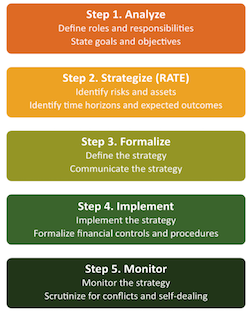I don’t believe that the required disclosures associated with the DOL’s conflict-of-interest rule will pose the greatest liability for firms. Rather, it will be the organization’s inability to demonstrate established fiduciary best practices that will put firms at risk.
Many organizations are suffering from target fixation. This is a military term to describe a situation where a pilot becomes so absorbed in hitting the target that they lose track of their heading and altitude and actually crash into their objective.
It’s not surprising that firms are fixated on the conflict-of-interest rule since there is widespread agreement that it is going to expose the industry to significantly more litigation. The rule is long, complex, and bears no resemblance to established fiduciary best practices or generally accepted investment management principles.
However, the rule’s disclosure requirements will not be the primary source of liability. ERISA attorneys, with the assistance of the DOL, are going to figure out the language and paperwork to comply with the rule. Over time, most firms should be able to demonstrate compliance.
No, liability is going to turn on whether a firm can demonstrate that its advisors, brokers or agents are procedurally prudent. Firm-wide training on a prudent decision-making process is what many executives have overlooked.
Procedural prudence is the bedrock of a fiduciary standard of care, and has been for decades. It has been the wellspring for the development of generally accepted investment management practices, such as procedures for:
- identifying a client’s goals and objectives;
- diversifying a client’s investment portfolio;
- preparing a statement of a client’s investment strategy;
- conducting due diligence on a client’s investment options;
- controlling and accounting for a client’s fees and expenses; and
- monitoring a client’s investment strategy.
The plaintiffs bar is very familiar with the above procedures and will certainly use the practices as a checklist during discovery and depositions. We know from examining case law that most fiduciary liability is a result of omission, as opposed to a commission. It’s not what the fiduciary did, but rather the procedures the fiduciary forgot to follow.
Just the same, there will be a number of plaintiffs’ attorneys who will attempt to argue that their clients were harmed because of a firm’s deficient disclosures or non-compliance with the conflict-of-interest rule. I suspect, however, that the courts are going to apply a reasonableness standard and show leniency if a defending firm can demonstrate substantial compliance with the rule.
Click here to read more commentary from Don Trone.
On the other hand, a firm may face substantial liability if it cannot demonstrate that its advisors, brokers or agents were procedurally prudent. It will be difficult to defend a firm’s departure from generally accepted fiduciary best practices.
We’ve been writing about procedural prudence for more than 30 years. In fact, Procedural Prudence was the title of our first book, which was published in 1989.
At one point we had developed an inventory of 36 different fiduciary practices that could be used to define a procedurally prudent process. Today, the list is in the form of a framework consisting of five steps and 10 dimensions; the dimensions define the details of each step (see illustration).
The decision-making framework is based on the three F’s: fiduciary best practices, FINRA rules and financial planning practices.
We’ve refined the framework to support FINRA rules and financial planning practices because the vast majority of retirement savers are going to be served by advisors, brokers, financial planners and agents.
So too, the framework is uniform. The same framework can be used to define fiduciary procedures for the more than eight million men and women in the U.S. who have the legal responsibility for managing the assets of pension plans, foundations, endowments, personal trusts, personal wealth and retirement savings.
Getting back to the conflict-of-interest rule, one of the many reasons why I’m opposed to it is that it only references three of the above dimensions — the duty of fiduciaries to:
- state they are serving in a fiduciary capacity;
- control and account for the retirement saver’s fees and expenses; and
- disclose conflicts of interests.
This is why many of us refer to the rule as a de minimis standard. It should be defining the gold standard for the industry; instead it’s defining a bronze standard.
It’s not the BICE that’s going to BITE you – it’s the lack of procedural prudence. Don’t be fixated on the wrong target. Being in compliance with the conflict-of-interest rule is important, but not as important as your ability to demonstrate a prudent decision-making process.
©2017, 3ethos. Used with permission.
Don Trone is the CEO and co-founder of 3ethos, and was the founding CEO of fi360. He has written or co-authored 10 books on fiduciary responsibility, served on the DOL’s ERISA Advisory Council, and testified before the U.S. Senate Finance Committee on fiduciary best practices. This column originally appeared in the Fall issue of NAPA Net the Magazine.


